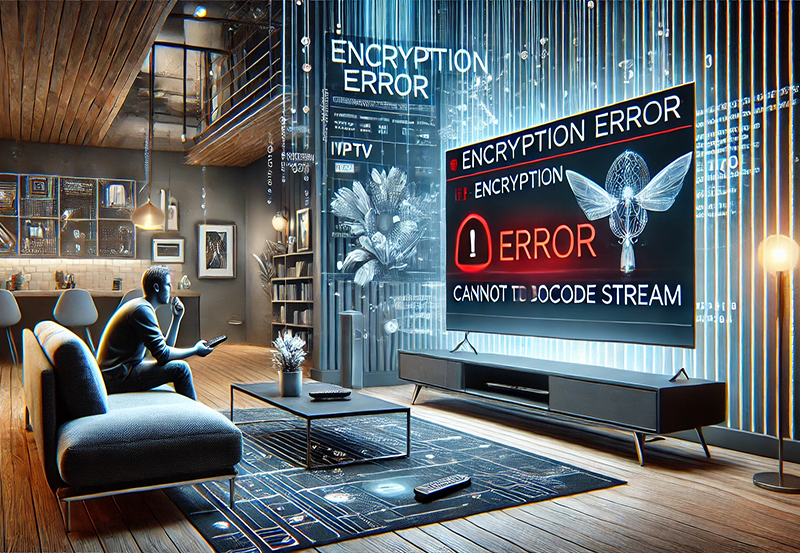IPTV (Internet Protocol Television) has become a popular way to stream TV shows, movies, and live broadcasts. However, like any streaming service, users may occasionally face playback issues after system updates. These errors can range from buffering and freezing to complete playback failures. This article outlines how to fix IPTV playback errors after updates, ensuring a smooth viewing experience.
Buy 1 Year IPTV Subscription and Enjoy Unlimited Content
Understanding IPTV Playback Errors After Updates
What Are IPTV Playback Errors?
IPTV playback errors are interruptions or failures during streaming. These errors can manifest in several ways:
- Buffering: Constant pauses and reloading.
- Freezing: The image or video pauses, but sound continues.
- Black Screen: No video or picture output.
- Audio-Video Sync Issues: Sound and video are not aligned properly.
- Crashes: The IPTV app or device unexpectedly stops working.
Why Do These Errors Occur After Updates?
Updates are usually beneficial as they improve system functionality, enhance security, and offer new features. However, updates can also inadvertently introduce compatibility issues, bugs, or other conflicts that lead to IPTV playback errors. Common causes include:
- Outdated Software: After updates, some devices or apps might not be fully compatible with the new firmware.
- Corrupt Data: Occasionally, updates may corrupt data or settings, causing playback issues.
- Cache and Storage Issues: Updates can fill the device’s cache, affecting its ability to play content smoothly.
- Server Configuration Changes: Updates to your IPTV service may alter server settings, causing playback issues.
- Firmware Issues: Problems with TV or device firmware may cause conflicts with IPTV apps.
How to Fix IPTV Playback Errors After Updates
If you are experiencing issues after an IPTV update, try the following troubleshooting steps to resolve the problem.
1. Check Your Internet Connection
A slow or unstable internet connection is one of the most common causes of IPTV playback errors. After updates, network settings can sometimes be altered, or your connection may not be optimal for streaming high-quality video. Follow these steps:
- Run a speed test: Make sure your internet speed meets the minimum requirements for IPTV streaming. For HD content, you need at least 5 Mbps; for 4K, 25 Mbps or more is recommended.
- Check your Wi-Fi signal: If you are using Wi-Fi, ensure the signal is strong enough to support streaming. Consider using a wired Ethernet connection for a more stable connection.
- Restart your router: A simple router reboot can fix temporary network issues and improve streaming quality.
2. Clear Cache and Data
Over time, IPTV apps accumulate cached data, which may become corrupted after an update. Clearing the cache can often resolve playback issues. Here’s how to do it:
- On Android devices:
- Go to Settings > Apps > [IPTV app] > Storage.
- Tap Clear Cache and then Clear Data.
- On smart TVs:
- Navigate to Settings > Apps > [IPTV app].
- Look for an option to clear cache or data.
- If this doesn’t work, you may need to uninstall and reinstall the app.
3. Update Your IPTV App and Firmware
Ensure that both your IPTV app and device firmware are up to date. Updates often include bug fixes, new features, and performance improvements:
- For Android devices: Go to the Google Play Store, search for your IPTV app, and tap Update.
- For smart TVs: Check for system or firmware updates in the settings menu. You can often find an option to update the TV’s operating system.
- For IPTV box users: Check the manufacturer’s website or settings menu for the latest firmware version.
4. Reconfigure App Settings
Sometimes after an update, the app’s settings may be reset or misconfigured. To resolve this:
- Check video resolution: Ensure that the video resolution settings are appropriate for your device’s capabilities (e.g., 720p for low-end devices, 1080p or 4K for high-end models).
- Adjust playback options: In the IPTV app, look for settings related to buffering, stream quality, or hardware acceleration. Try adjusting these options to improve playback.
How to Install Gaia Kodi Addon & Set it Up in Easy Steps
5. Disable Background Apps and Processes
Background apps can consume system resources, causing performance issues with IPTV playback. Disable unnecessary apps to free up processing power:
- On Android devices, close all unnecessary apps from the recent apps menu.
- On smart TVs, make sure no other apps or services are running in the background.
6. Check for Server or Provider Issues
Sometimes, the issue isn’t on your end. IPTV providers may experience server outages or technical problems. If you’re still having playback issues after trying all the fixes, it’s worth:
- Contacting customer support: Reach out to your IPTV provider to check if there are known issues or maintenance happening.
- Checking for service outages: Search online or visit the provider’s social media pages to see if there are any widespread issues.
7. Reboot the Device
A simple restart can often resolve many technical issues:
- Turn off your device for at least 10 seconds and then turn it back on. This can help reset any temporary problems that are affecting IPTV playback.
- If the issue persists, consider rebooting your modem and router as well.
FAQs:

Q1: Why do I get buffering after updates?
Buffering can occur after updates due to changes in network settings or the increased demand on system resources. Try checking your internet speed and clearing the cache of your IPTV app.
Q2: My IPTV app keeps crashing after an update, what should I do?
First, ensure that the app and firmware are up-to-date. If the issue persists, clear the app’s cache or reinstall it.order IPTV
Q3: How can I optimize IPTV playback for high-definition content?
To stream HD or 4K content smoothly, make sure you have a fast, stable internet connection and set your IPTV app’s video quality to match your device’s capabilities.
How to Set Up IPTV on the IP Television





